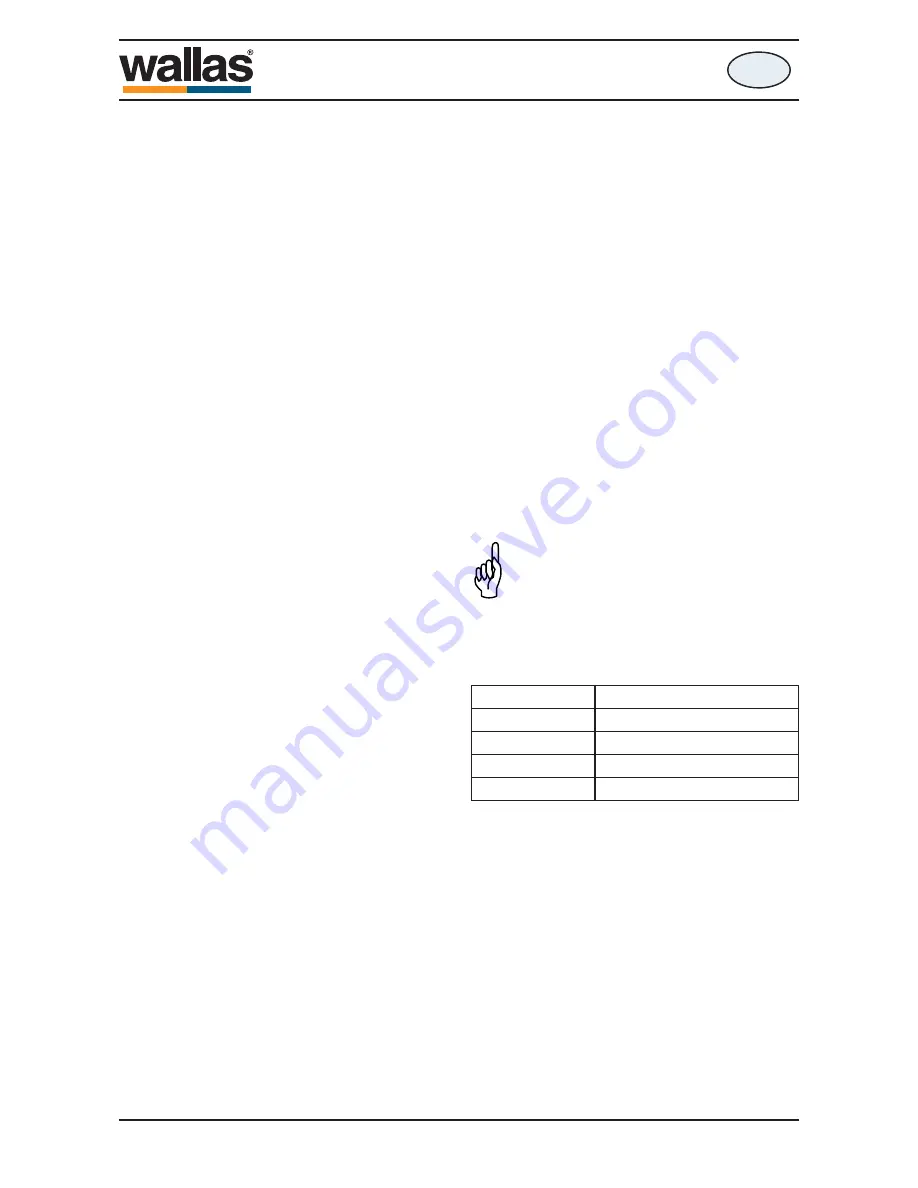
- 88 -
Installation
en
Warm air duct
It is recommend to isolate the warm air ducts.
Take care of that warm air registers are not
closed at the same time.
Initial start-up
The device usually does not start the fi rst time after
it has been installed. It may take several starts for
the fuel hoses to fi ll up enough for the fuel to reach
the burner.
Watch the hoses as they fi ll up as you start the
device.
Watch the hoses fi ll up with fuel while you start the
device.
When the device starts, look for possible leaks in
the exhaust and fuel connections.
Run the device for ca. ½ hour to allow possible
installation and manufacturing greases to burn off.
Make sure there is enough ventilation.
Remember to carefully read the instruc-
tions for installing, operating and ser-
vicing each device before installation.
To be fi lled in by the installer
Test-run performed
Serial number
Company
Installer
Installation date
Signed
Installer must check (x) the sections, then sign her/his
signature.
Installation and initial start-up
Installation
Ensure suffi cient air intake, minimum aperture
of 100 cm
2
.
Ensure that the boat is suffi ciently ventilated.
The exhaust pipe outlet must be at least 400
mm away from the opening for fi lling fuel or tank
breather.
We recommend installing the operating switch
onto vertical surface where liquids are not able
to leak into the switch and it is out of reach of
children (cable length 6 m).
Fuel system
The hoses must be kept clean during installa-
tion.
Use only Wallas fuel hoses.
Cut the fuel hoses to the appropriate length
when installing them.
The return fuel tube must have continuos fall to
fuel tank with no loops upward. All extra length
is cut away below the tank adapter.
Electrical installation
The nominal voltage of the device is 12 VDC.
Current for the device is taken directly from the
battery terminals using cables that are as short
as possible.
Put the main fuse of ca. 15 A on the + cable
close to the battery.
Exhaust fumes
When choosing the outlet location, note that
exhaust fumes are hot.
Use a swan-neck to prevent splash water enter-
ing the boat from splashing into the outlet.
If your boat has a metal hull, the device and
outlet must be insulated from the hull to prevent
electrochemical corrosion.
The exhaust pipe must not come into contact
with fi re hazardous materials. Insulate the ex-
haust fume hose, if necessary.
1800 t / 2400 t
490535
en






















